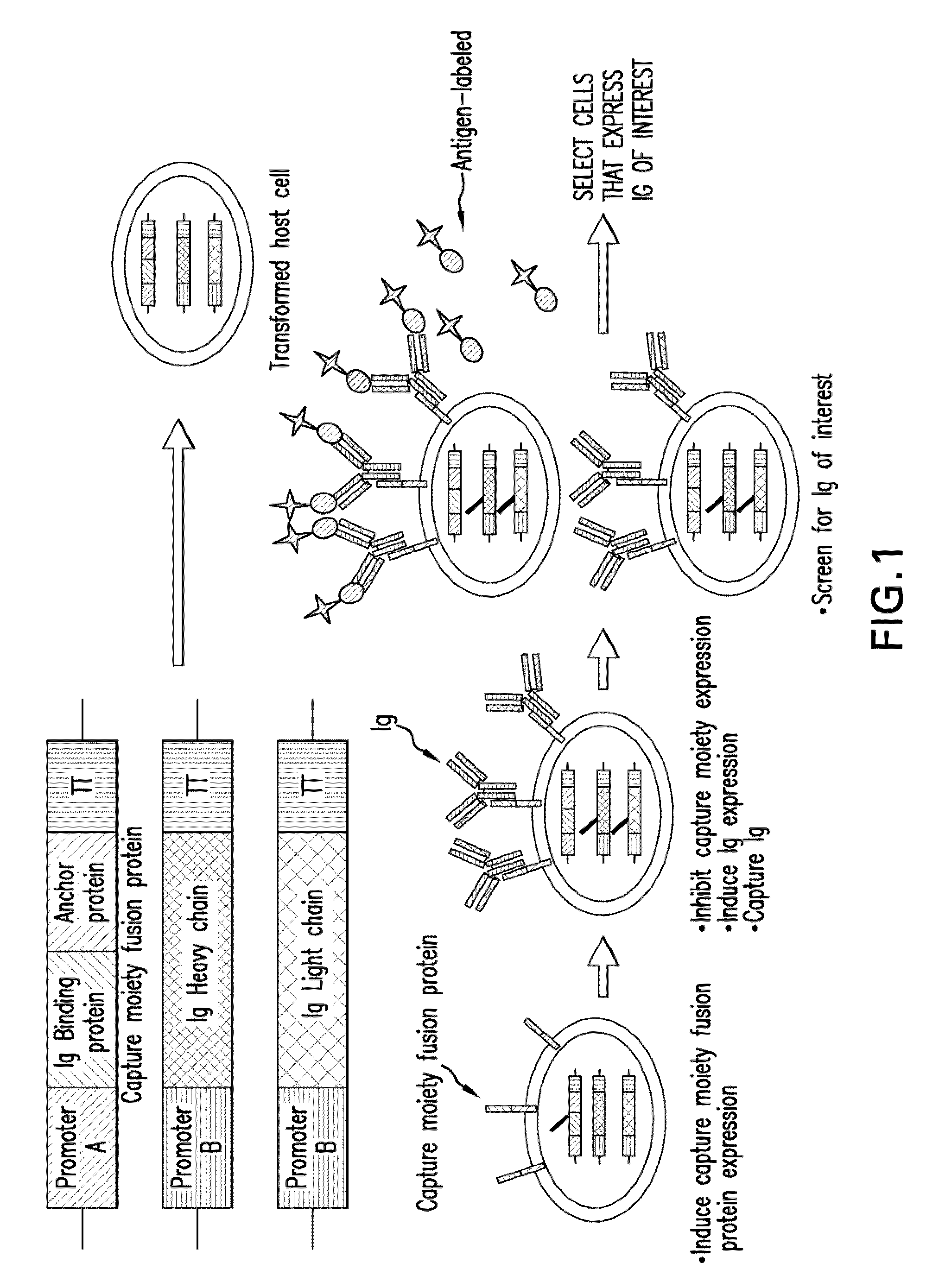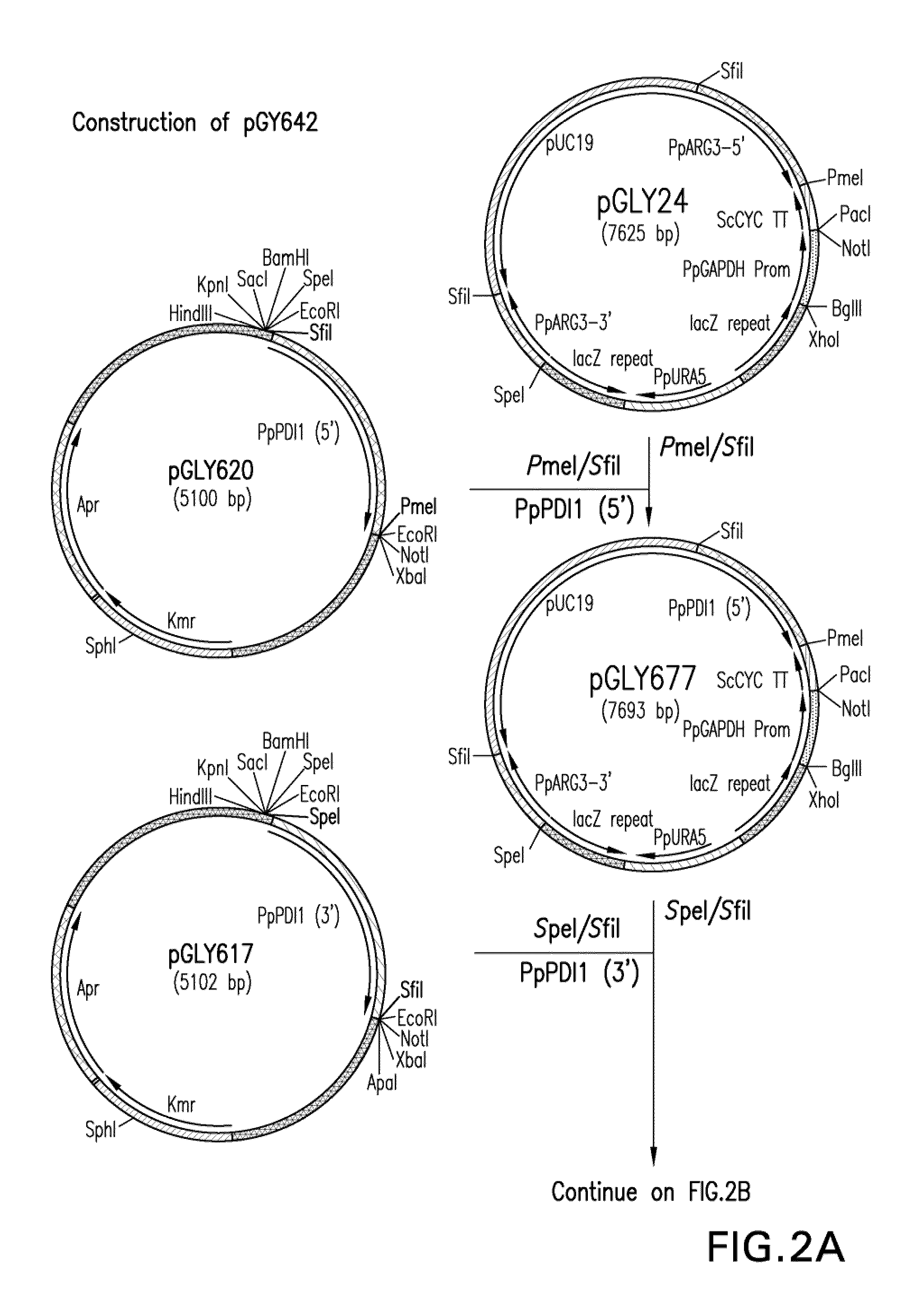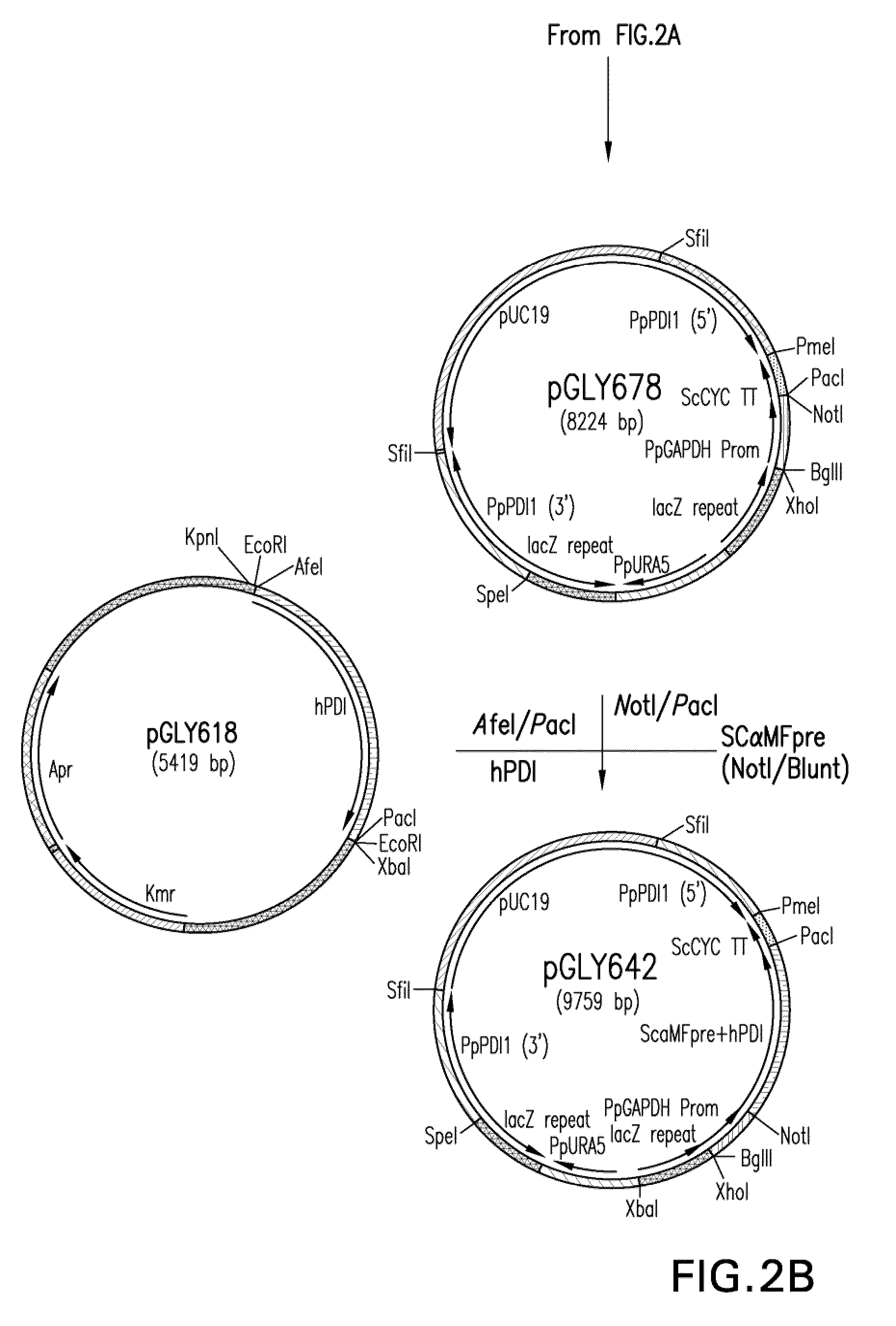Surface display of whole antibodies in eukaryotes
a technology of immunoglobulins and surface displays, which is applied in the field of surface display of whole antibodies in eukaryotes, can solve the problems of limited wide-spread successful application, difficult to isolate high affinity antibodies (kd1 nm) by panning, and the nature of phage display precludes quantitative and direct discrimination of ligand binding parameters. , to achieve the effect of enhancing translation efficiency, stabilizing cytoplasmic mrna,
- Summary
- Abstract
- Description
- Claims
- Application Information
AI Technical Summary
Benefits of technology
Problems solved by technology
Method used
Image
Examples
example 1
[0150]Utility of the invention was demonstrated using Pichia pastoris as a model. The glycoengineered Pichia pastoris strain yGLY2696 was the background strain used. In strain yGLY2696, the gene encoding the endogenous PDI replaced with a nucleic acid molecule encoding the human PDI and a nucleic acid molecule encoding the human GRP94 protein inserted into the PEP4 locus. The strain was further engineered to alter the endogenous glycosylation pathway to produce glycoproteins that have predominantly Man5GlcNAc2 N-glycans. Strain YGLY2696 has been disclosed in co-pending Application Ser. No. 61 / 066,409, filed 20 Feb. 2008. This strain was shown to be useful for producing immunoglobulins and for producing immunoglobulins that have reduced O-glycosylation. Construction of strain yGLY2696 involved the following steps.
[0151]Construction of expression / integration plasmid vector pGLY642 comprising an expression cassette encoding the human PDI protein and nucleic acid molecules to target the...
example 2
[0167]Expression vectors encoding an anti-Her2 antibody and an anti-CD20 antibody were constructed as follows.
[0168]Expression / integration plasmid vector pGLY2988 contains expression cassettes encoding the heavy and light chains of an anti-Her2 antibody. Anti-Her2 heavy (HC) and light (LC) chains fused at the N-terminus to α-MAT pre signal peptide were synthesized by GeneArt AG. The nucleotide and amino acid sequences for the α-amylase signal peptide are shown in SEQ ID NOs:27 and 28. Each was synthesized with unique 5′ EcoR1 and 3′ Fse1 sites. The nucleotide and amino acid sequences of the anti-Her2 HC are shown in SEQ ID Nos:29 and 30, respectively. The nucleotide and amino acid sequences of the anti-Her2 LC are shown in SEQ ID Nos:31 and 32, respectively. Both nucleic acid molecule fragments encoding the HC and LC fusion proteins were separately subcloned using 5′ EcoR1 and 3′ Fse1 unique sites into an expression plasmid vector pGLY2198 (contains the Pichia pastoris TRP2 targetin...
example 3
[0171]This example describes the construction of plasmids comprising expression cassettes encoding cell surface anchoring proteins fused to binding moieties capable of binding an immunoglobulin, which are suitable for use in Pichia pastoris. The plasmids comprise a nucleic acid molecule encoding sed1p, a cell surface anchoring protein that inherently contains an attached glycophosphotidylinositol (GPI) post-translational modification that anchors the protein in the cell wall. The nucleic acid molecule encoding the sed1p was linked in frame to a nucleic acid molecule encoding an antibody-binding moiety that is capable of binding whole, intact antibodies.
[0172]Four plasmids were constructed containing antibody binding moiety / cell surface anchor fusion protein expression cassettes. Plasmid pGLY4136 encodes the five Fc binding domains of Protein A fused to the Saccharomyces cerevisiae SED1 (ScSED1) gene followed by the CYC terminator, all under the control of the AOX promoter (FIG. 9). ...
PUM
| Property | Measurement | Unit |
|---|---|---|
| OD | aaaaa | aaaaa |
| temperature | aaaaa | aaaaa |
| surface anchoring | aaaaa | aaaaa |
Abstract
Description
Claims
Application Information
 Login to View More
Login to View More - R&D
- Intellectual Property
- Life Sciences
- Materials
- Tech Scout
- Unparalleled Data Quality
- Higher Quality Content
- 60% Fewer Hallucinations
Browse by: Latest US Patents, China's latest patents, Technical Efficacy Thesaurus, Application Domain, Technology Topic, Popular Technical Reports.
© 2025 PatSnap. All rights reserved.Legal|Privacy policy|Modern Slavery Act Transparency Statement|Sitemap|About US| Contact US: help@patsnap.com



